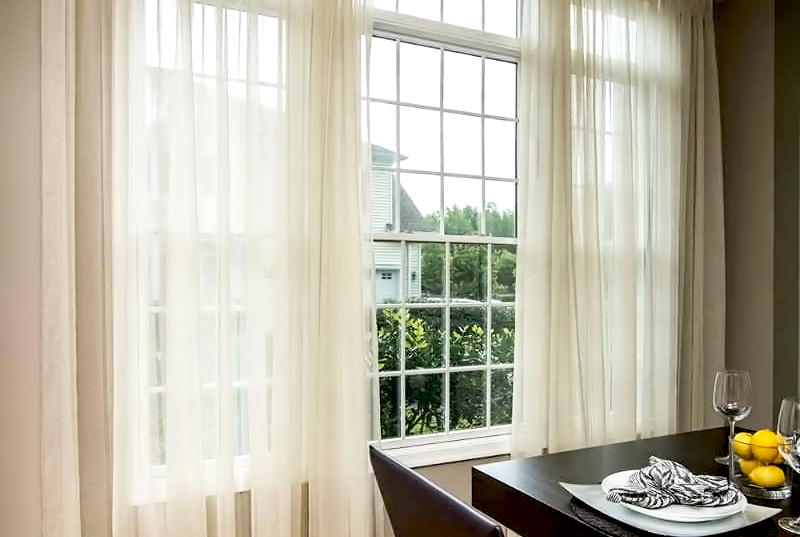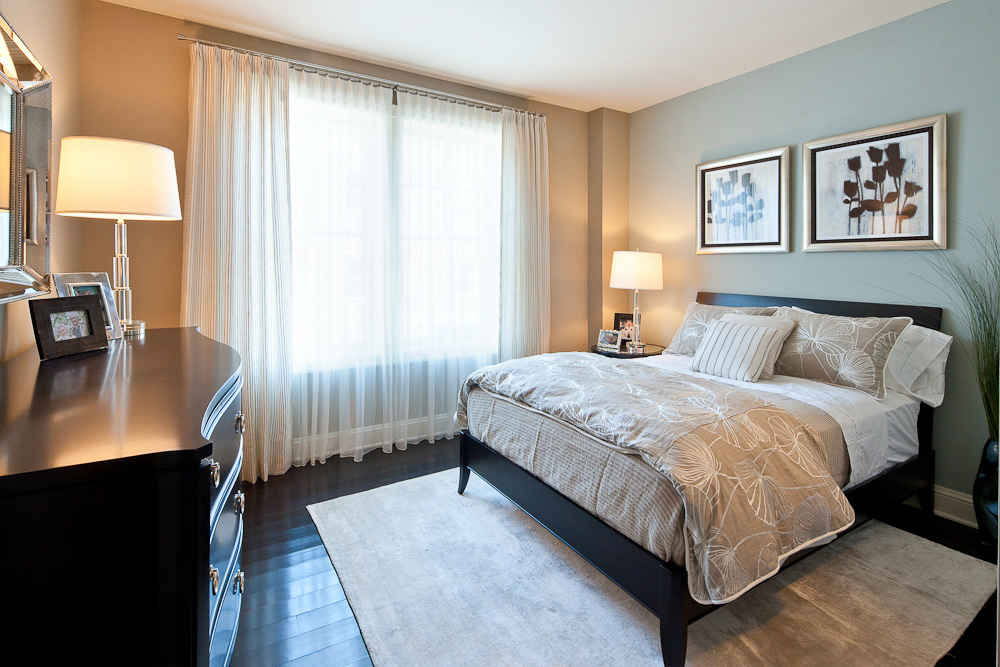Don’t Save Your Customer’s Money

- By LuAnn Nigara
- September 6, 2019
- Window Fashion Vision Magazine
How many times have you been on a window treatment appointment and right off the bat the customer says, “Is this going to be expensive? I don’t want to spend a lot of money on window treatments”.
It happens all the time. I know—I hear it too.
What goes through your mind when this happens? Do you start worrying about what to suggest?
Do you start worrying if you are wasting your time? Do you start scrambling to think of ways to cover the windows and save them money?
Wrong, wrong and wrong.
Why? Because now is not the time to worry. We have not figured out what “expensive” means to this customer yet.
Expensive is one of those words that has a different meaning for every person.
Think about it, we’ve all had customers where $300 was the max price they would dream of spending for one window and others where $5000 was the right price for one window.
In fact, to prove how subjective the word is, sometimes it’s the very same customer, just a different room. Until we actually figure out what it means to them, the word expensive means nothing.
More importantly, it doesn’t do our customer or us good to jump to conclusions at the first mention of the word. Ultimately, the real meaning of expensive will be determined by several influences. Some influences we need to uncover in the sales process and some influences we will introduce in the sales process.
Before we talk about the factors that influence the personal concept of expensive, I want to caution you, even when you think you know what expensive means to a particular customer, it is a mistake to narrow your presentation based on this.
We are the professionals and no matter what they say, they have called us because of our expertise. They are counting on us to advise them on the style that will look the best, will perform the best and will satisfy their objectives for privacy and light control.
When we decide to save their money, they might never know which solution is truly the right one.
Making this mistake could mean we leave our customer less than fully satisfied. If we don’t satisfy them, we cannot count on referrals and repeat business.
Never confuse this is with overselling or attempting to coerce them into a product that they don’t need or want. Rather, we need to keep in mind our customers often don’t know, what they don’t know.
If they come to conclusions and make selections based on price alone, they may never know the benefits and value other solutions could have afforded them. By respecting our customer and educating them we serve our customer at the highest level.
As our visit with them begins we should have two goals, to learn about the factors that influence their meaning of expensive and to share the factors that influence the value of expensive.
Influences we need to uncover:
- Why do they want new treatments? Are the windows actually bare? Is there a life event coming up? Are they finally creating their dream master bath?
- How long do they expect to be in the home? Is this their forever home? Is it a starter home? Are they downsizing? Are they renting?
- How did they hear about you? Do they know people you have worked with successfully? Are they aware of your reviews on Google, Houzz or FaceBook groups?
- Do they have other estimates? Do they like the products quoted and are simply doing due diligence or are they unconvinced they have the right solution for their project?
- Have they ever ordered custom window treatments before? Are there existing custom treatments anywhere else that you can see?
- Are all decision-makers in agreement about getting new treatments?
Gathering the answers to the above questions will give you an idea of their mindset, their motivations and their preconceived ideas about window treatments as well as their expectations about price points. These are all important because the answers help you evaluate what expensive means to them.
After we have listened to them, fully focused, and we have heard their ideas and information, it is our turn to contribute, educate and influence.
Influences we need to introduce:
- Your credibility. Let them know your philosophy as a business owner. Share any community organizations you belong to. Talk about how many years you been in the industry.
- Your service processes. Explain how you work, talk about your team and their roles. Let them know what to expect when working with you so they can visualize themselves in your process.
- Your warranty programs. Tell them you will stand behind what you sell and why this is important to you and should be especially important to them. Explain how a warranty backed by the national brand but not by a local retailer is of little value. Explain how working with you, you take care of all service and repairs. Explain, they will not have to ship a product back to the manufacturer to access “the lifetime warranty”.
- Your happy customers in their area. Talk about the nearby projects. If this customer is a referral, mention the referral source and your relationship with them. Talk about the project and mention something complimentary about them.
- Your expertise. Discuss projects with similar challenges to theirs and explain how you solved them.
- The reputation of the brands you offer. Brand name recognition is important because it instills trust that the products are quality.
- Share how you are different, why your customers choose to do business with you. Do a little tasteful bragging here. Describe your passion for your profession and convey your genuine interest in them and their project.
Now that we both have all of the above information, it is time to make our suggestions for treatments.
To be successful at this next step we need to be skilled enough to guestimate the approximate cost of various types of treatments for a standardish size window. When we suggest the best solution and we are able to ballpark the price of products in real time, then the actual conversation about expensive can begin.
I recently had an appointment with a previous customer. She gutted a guest bedroom, creating a master bath and master dressing room for herself. When we stood looking at the window she said, “LuAnn, I’ve been thinking about wood blinds. I remember from doing the bedrooms, they are pretty reasonably priced and we just spent a fortune on this renovation.”
Of course, we could do a wood blind but I really believed a shutter was the ideal solution. I thought the function would be as good or better and I knew the style would be much more beautiful for this newly designed, luxury bath.
As we talked I showed her pictures of shutters and wood blinds and I explained the value of shutters. I was sure to say that wood blinds could certainly work and would be very nice as well.
I explained the investment for shutters would be three or four times the cost of wood blinds and asked if she thought we should consider them. Because I was able to ballpark both products without taking the time to measure, to go through samples and to start looking up price lists it was an easy conversation for us both.
Non-confrontational for her and not time-consuming for me. On the spot, she was able to consider the value vs the price and make the choice best for her.
This client ultimately decided on the shutters and she is quite happy both because she knows I took the time to suggest possibilities and because she knows she made an informed decision.
When we handle our appointments this way, some customers will choose to spend more than they expected, just as this one did. They decide the value received is worth spending more money for.
Others will decide to spend less, knowledgeably forgoing features and benefits in favor of saving money. The operative phrase is, they decide.
However, sometimes we do all of this and they expect us to provide the more expensive solution at a lower price.
What now?
Now you have to stick to your guns.
We have outstanding products, available for every price range, manufactured by reputable brands that bring beauty to their homes, that protect from harmful UV rays, that provide privacy to the world outside. We guide them in designing and selecting and we deliver with professional installation. Even products at the lowest price points are custom and they are quality. Our products make them happy and proud to be in their home. Our products and services have value and the price of that value is not determined by their notion of what they want to spend.
Your obligation is to advise them, it is up to them to choose what they can afford, period.
Do you ever bargain at a restaurant? Do you ever say to the waiter, this bottle of wine is the one that I want but the price is so high, what can you do for me?
No, no you do not.
So why do we think it’s ok for customers to say this to us? Worse, why do we cave and lower our price when people say this to us? The only reason I can think of is because, simply, we let them.
Use the word no, it’s ok.
We need to decide to run our businesses like businesses and not a stall at a swap meet. To do this, convey all the value you bring, focusing on reliable service and quality, not price. Establish an atmosphere of professionalism and integrity where there is absolutely no expectation that prices are negotiable. When we are asked to lower our prices, arbitrarily, the answer is just “no” and silence. If pressed, follow with, “I understand you have established an amount of money for this project and I’d be delighted to show you what will fit your needs for both function and price point. The products you are talking about simply are not available in that investment range.”
And then do exactly that, suggest the solution that fits the amount they are willing to spend.
If they want to spend less money, they get a less expensive option.
Understand as consumers we all make choices every day. We all have to examine value vs money for every transaction we make, whether it is a bottle of wine, a pair of shoes or window treatments. When you really get this, when you realize you make choices too on things you can afford and the things you cannot, then the light bulb goes on.
It is not up to us to make the products fit their budget, it is up to them to purchase products within their budget. We provide a wide range of services and products, they decide which fits their budget.
If you struggle with this, with customers constantly bargaining with you, please consider all of your experience, your commitment to your customers, how much you appreciate each one, how much you give and how much you care about a beautiful outcome for each client you serve.
You are a professional, you are needed and should be valued. Our job is to help our customer discover the very best value and very best service they can afford, it is not our job to save our customer’s money.
LuAnn Nigara WFV May 2019










Jake
(16 May 2020)The design and purpose should be discussed clearly to the client. The main reason why they hire you is to improve the interior design of the house. 75% of the creative ideas should come from you.